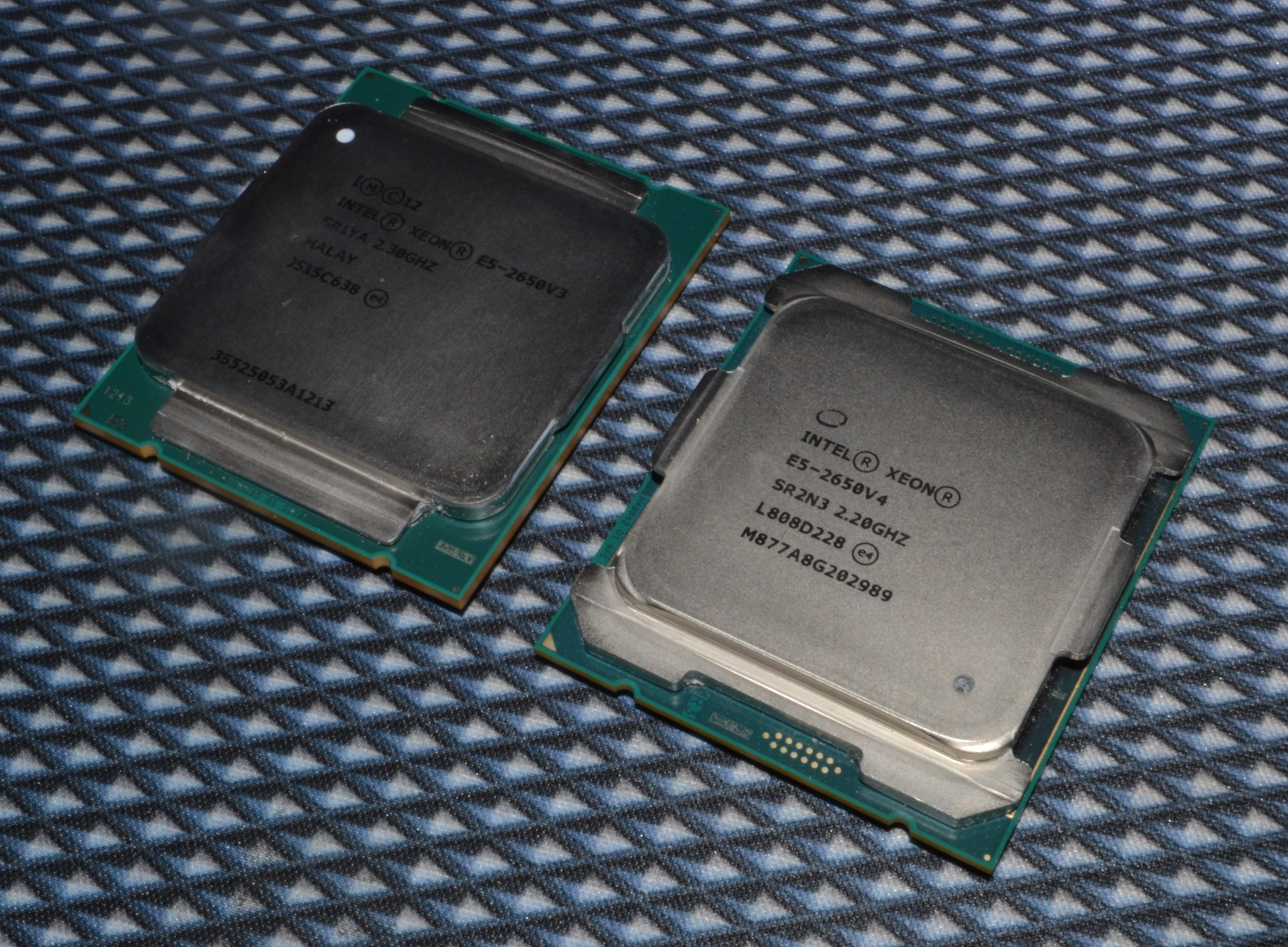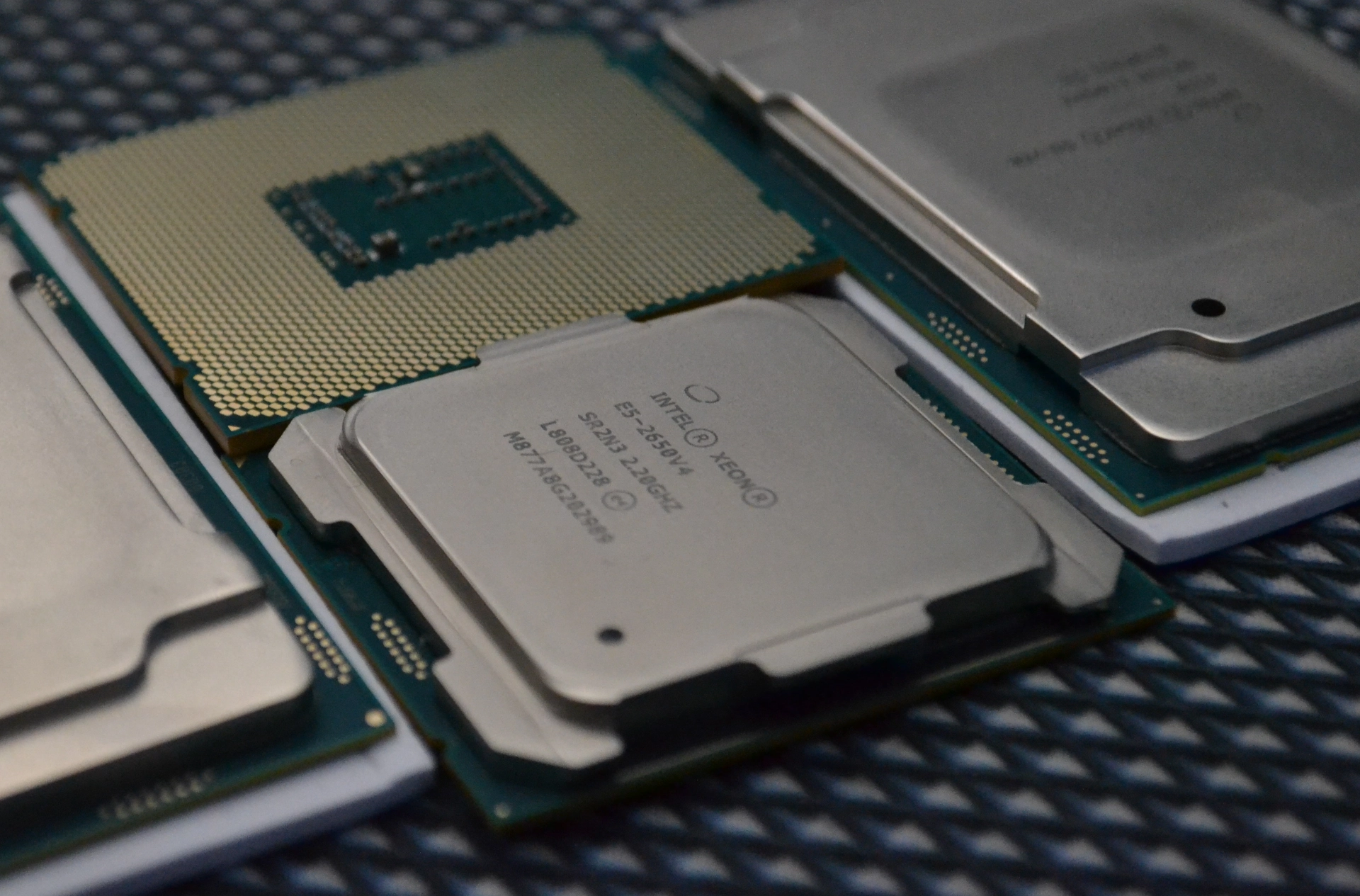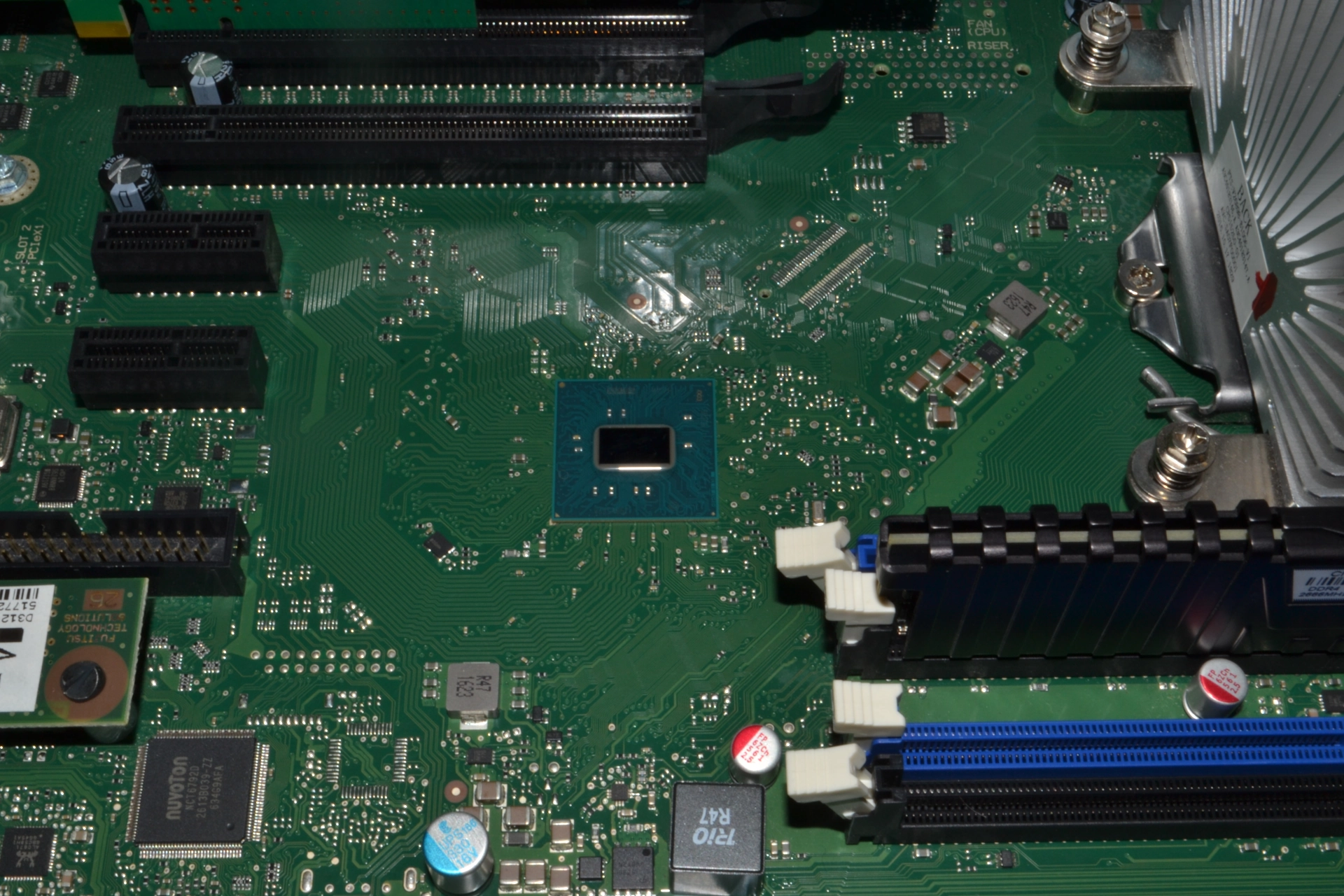Some history about X99 family
Intel® released the X99 chipset in late August 2014 (11 years ago), under the codename "Wellsburg" it targeted high-end desktop and enthusiasts segments. Using the socket LGA 2011-v3 it supports the Intel Core i7 Extreme and Intel Xeon E5 16XX v3 / 26XX v3 processors, witch belong to the "Haswell" microarchitecture. In May 2016 (9 years ago) X99 family was extended to the "Broadwell" microarchitecture varians adding support for the Intel Core i7 Extreme and Intel Xeon E5-16XX v4 and E5-26XX v4 processors.

In June 2021 Intel® X99 Series Chipset Family reached EOL (End-Of-Life) meaning that no support for any further bug fixes and security fixes on this baseline will be provided.
EOL doesn't mean that the CPUs and other chipsets will stop working. Brands offer several years of support where they keep fixing bugs and security issues. Once new products hit the markets brands encourage companies to use newer and enhanced hardware, eventually older products arrive to end-of-life, and it will mean is no longer an option for critical applications.
Note:
Once EOL is reached established manufacturers stop or have already stopped selling the hardware some time ago. This means that if you have a CPU that have reached EOL it will be really difficult to get a brand-new motherboards of established manufacturers that will support it.
Luckily to our rescue there are a lot of motherboards targeting the X99 but there are caveats. They all come from China, they have no BIOS documentation, and you really need to read carefully the specifications to make sure what you are purchasing.
After discussing with a workmate I wanted to build a new server he pointed me out all the Combos that can be found on Aliexpress. These combos offer Motherboard, CPU and RAM with a really affordable price. If you are purchasing from the European Union during shipping customs will stop the package and charge you the proper taxes.

Intel Xeon E5 2650 v3 & v4
Haswell microarchitecture
At June 4, 2013, Intel announced the first CPUs based on the Haswell microarchitecture. As the successor to Ivy Bridge, Haswell was built using the 22 nm process and was specifically designed to enhance power efficiency while optimizing the performance of FinFET (non-planar "3D") transistors.
Intel also introduced the first CPUs using the "U" suffix that where the low power processors designed for laptops and ultrabooks.
Some of the CPU features that Haswell introduced where:
- Wide Execution Engine
- AVX2 instructions
- Fully integrated voltage regulator (FIVR)
- New advanced power-saving states, C6 and C7
On the processors including an integrated GPU we can find:
- Hardware graphics support for Direct3D 11.1 and OpenGL 4.3
- 40 execution units (EUs) vs 16 EUs of Ivy Bridge (varies by processor)
- Level 4 cache, dynamically shared between the on-die GPU and CPU
- Support for HEVC hardware decoding
The CPU release was meet with the following socket chipsets:
- LGA 1150 for desktops, and rPGA947 and BGA1364 for the mobile market
- Z97 (performance) and H97 (mainstream) chipsets
- Optional support for Thunderbolt technology and Thunderbolt 2.0
- Shrink of the Platform Controller Hub (PCH), from 65 nm to 32 nm.
In 2014, Intel released a refresh of Haswell, known as "Haswell Refresh." This included the 9-series chipsets and provided minor upgrades to CPU clock speeds, with increases of 100-200 MHz at the same price point. However, by the time the Haswell Refresh launched, the market had already shifted its focus toward the anticipated release of Haswell-E and the X99 chipset.
Broadwell microarchitecture
Intel launched the Broadwell microarchitecture on October 27, 2014, utilizing a new 14 nm process that succeeded the 22 nm process. This process incorporated FinFET multi-gate MOSFET technology. The Broadwell release primarily targeted high-end desktop CPUs, as no low-end CPUs were introduced. Additionally, Intel debuted the "Core M" processor branding, enabling the production of ultra-thin, fan-less laptops.
Intel's CEO at the time, Brian Krzanich, initially claimed that the chips would ship by the end of 2013. However, delays caused by low yields from Intel's 14 nm process postponed the release.
As part of this "tick" release, Broadwell introduced several new instruction set architectures, including:
- Intel ADX instruction set: ADOX and ADCX instructions
- RDSEED instruction set: For generating 16-, 32- or 64-bit random numbers
- PREFETCHW instruction
- Supervisor Mode Access Prevention (SMAP)
- Transactional Synchronization extensions (TSX)
The integrated GPU featured several advancements:
- Hardware support for Direct3D 11.2, OpenGL 4.4 (OpenGL 4.5 on Linux)
- Support for OpenCL 2.0
- VP8 hardware decoding and hybrid encoding support
- Two independent bit stream decoder (BSD) rings to process video commands on GT3 GPUs
- Intel Turbo Boost Max Technology 3.0 on Broadwell-E
C610 series PCH "Wellsburg"
The platform controller hub (PCH) is a chipset introducen in 2009 by intel and intended to fix the bottleneck in previous architectures based on north-bridge and south-bridge. The PCH serves as an interface between the CPU and the other peripherals.
Between the extensive I/O support that the PCH provides we can find:
- ACPI Power Management Logic Support, Revision 5.0a
- PCI Express Gen 3
- Integrated Serial ATA Host controller 3.2, supports data transfer rates of up to 6 Gb/s on all ports
- USB 3.2 Gen 2x1 (10 Gb/s) eXtensible Host Controller (xHCI)
- Supports Intel® Rapid Storage Technology (Intel® RST)
- Supports Intel® Active Management Technology (Intel® AMT)
- Supports Intel® Virtualization Technology for Directed I/O (Intel® VT-d)
- Supports Intel® Trusted Execution Technology (Intel® TXT)

Intel PCH chipset
The "Wellsburg" PCH consumes up to 7 Watts when fully loaded.
We can find the following variations:
- DH82029 (PCH C612), intended for servers and workstations
- DHX99 (PCH X99), intended for enthusiasts
Who is the build for nowadays?

Intel Xeon E5 2650 v4
Whether this build works for you really comes down to what you need. If you're after top-notch performance or setting up a server for important tasks, it's best to go for newer hardware from reputable brands. But if you're just looking for a budget-friendly workstation and don’t need any fancy BIOS configurations, those X99 motherboards could be a solid choice.
The X99 series was aimed at enthusiasts and high-end users back in the day, and while it might not be considered high-end anymore, the Intel Xeon E5 26XX v4 still packs enough performance to function well as a workstation or server.
However, if you're a gamer or a professional using the latest software, or if you want something that can keep up with future demands, you should definitely focus on newer systems. Modern setups provide better single-thread and multi-thread performance, faster memory speeds, PCIe 4.0/5.0 for quicker GPUs and storage, plus advanced connectivity options. These features are crucial for intense gaming, real-time tasks, or VR applications.
Ultimately, the choice depends on whether cost-effectiveness and adequate performance for legacy tasks outweigh the benefits of cutting-edge technology.
Motherboard options
Currently, we can find several options to build a workstation on server using the X99 Family.
Depending on your budget or needs you may prefer a well known and established brand like Supermicro by purchasing a second hand motherboard on ebay and ensuring all the features will be supported with proper documentation, or you may prefer a build combo from aliexpress that will do the job for a fraction of the price.
Both options have their caveats for example not using a brand-new motherboard or trusting an uncertified motherboard without grants that features will be supported.
Note:
The following list compares second hand motherboards sold on Ebay of trusted and known brands versus Aliexpress combos that include RAM and CPU.
The PCIe lanes or features of the motherboards are not disclosed being a huge deterministic point.
| Brand | Product | Cost |
|---|---|---|
| Supermicro | C7X99-OCE-F |
120-150 EUR |
| ASRock | X99 Taichi |
170 EUR |
Fatal1ty X99X Killer |
160-200 EUR |
|
| Gigabyte | GA-X99-UD |
140-150 EUR |
GA-X99 Designare EX |
150-170 EUR |
|
| MSI | X99A SLI Plus |
130-170 EUR |
X99A Raider |
140-160 EUR |
Here is a list of current brands selling chinese combos including motherboard, X99 CPU and RAM builds and their price:
| Brand | Motherboard model | CPU | RAM | Cost |
|---|---|---|---|---|
| KLLISRE | unknown | E5 2650 V4 |
16GB DDR4 |
92.05 EUR |
| unknown | E5 2690 V4 |
16GB DDR4 |
145.83 EUR |
|
| QIYIDA | unknown | E5 2630 V4 |
16GB DDR4 |
108.36 EUR |
| unknown | E5 2620 V3 |
16GB DDR4 NON-ECC |
103.38 EUR |
|
| MACHINIST | MACHINIST B9 | E5 2650 V4 |
16GB DDR4 ECC |
68.27 EUR |
| MR9A PRO MAX | E5 2640 V4 |
16GB DDR4 ECC |
150.56 EUR |
The Intel Xeon v4 performance
Let's compare a new Ryzen 7 5700X setup versus an Intel Xeon E5 2650 v4, Note that we are comparing a 8c/16threads CPU versus a 12c/24threads CPU.
This seems like unfair comparison but the Ryzen beats the Xeon and at what price?
Performance
The information of the performance has been obtained from geekbench.com.
5 different results will be used that are using bare metal performance excluding VMware and QUEMU setups that could be VMs.
The result will be calculated using the arithmetic mean:
Table of results:
| CPU | Single core | Multi-core | TDP | C6 state power consumption |
|---|---|---|---|---|
| Intel Xeon E5 2650 v4 | 942.8 |
6533 |
105 W |
14 W |
| Ryzen 7 5700X | 2142 |
9067 |
65 W |
? W |
The results show that the Ryzen 7 5700X is 127.196% faster in single core tasks, and this would be huge performance increase for gaming setups.
For the Multi-core performance the Ryzen 7 5700X is 38.787% faster than the Intel Xeon managing that with 8 threads less, it still outperforms the Intel Xeon.
What about the Thermal Design Power (TDP)?
The Thermal Design Power is maximum amount of power that tha CPU will generate under intense workload. This is only useful to choose a cooler!
Note:
What really maters in terms of power consumption is the power consumption of the full setup. RAM, Motherboard, GPU between other hardware will determine how much power does the system draw. Additionally, the C-States are managed by the OS and therefore the setup will vary for one system to another.
Unfortunately building the two systems to read the power consumption of both setups is out of my budget. This would be the correct approach and would give the best way to compare the consumption between the setups.
Before closing the power consumption section I would like to add that the Intel Datasheet of the E5 V4 family on the section 2.10 Package C-State Power Specifications we can find that on C6 state the power draw of the E5-2650 v4 is 13 Watts.
On the AMD side the C-state power draw information has not been released for the Ryzen 7 5700X.
Price
The prices have been collected from Aliexpress and Ebay and the shipping will be included separately. The prices will vary as well as the shipping but is to have an idea how much the system would cost.
The Aliexpress or Ebay selection will depend on the best listing available.
| Intel Xeon build | |||||
|---|---|---|---|---|---|
| Part | Price | Quantity | Shipping | Total | |
| Intel Xeon E5 2650 v4 | 8.65 |
1 |
1.94 |
10.59 |
|
| JINGSHA X99 D8 | 108.77 |
1 |
0 |
108.77 |
|
| Micron 16GB DDR4 2666 MHz 1Rx4 ECC | 12.00 |
2 |
5.00 |
29.00 |
|
| Total | 148.36 |
||||
| AMD Ryzen 7 | |||||
|---|---|---|---|---|---|
| Part | Price | Quantity | Shipping | Total | |
| AMD Ryzen 7 5700X | 157.84 |
1 |
0 |
157.84 |
|
| MSI MPG B550 Gaming Plus | 136.35 |
1 |
0 |
136.35 |
|
| Micron 16GB DDR4 2666 MHz 1Rx4 ECC | 12.00 |
2 |
5.00 |
29.00 |
|
| Total | 323.19 |
||||
Without adding the PSU, Case, GPU and other elements of the build and accounting both systems will use the same ECC memory the Ryzen build is 74.15% more expensive than the Xeon system.
Conclusion
Building an X99 system today can still offer significant benefits, particularly for users on a budget or those seeking a capable workstation or server for heavily multiprocessing / parallel tasks. X99 systems, based on Intel's Broadwell-E processors, provide access to high core counts and quad-channel DDR4 memory, which can be advantageous for multi-threaded workloads like video editing, 3D rendering, or virtualization. These systems are generally much cheaper than modern equivalents, as X99 motherboards and CPUs can often be found on the second-hand market for cheap. However, X99 systems lack features like PCIe 4.0 or 5.0 support, higher DDR4/DDR5 memory speeds, and newer connectivity options such as Thunderbolt 4 and Wi-Fi 6E.
This mean a X99 system nowadays is not suited for enthusiasts and professionals who need the highest performance and access to the latest technologies.
On the gaming side X99 systems are not ideal for gaming compared to newer hardware due to several critical performance limitations.
First, their DDR4 RAM speeds are significantly lower, often capped around 2400 MHz, whereas modern platforms support DDR4 speeds exceeding 4000 MHz and DDR5, offering even greater bandwidth and lower latency.
Gaming performance heavily depends on single-thread clock speeds, and X99 processors lag far behind modern CPUs in this area, with base and boost clocks typically peaking below 4 GHz. Modern processors, such as Intel's 13th Gen or AMD's Ryzen 7000 series, achieve much higher clock speeds (5 GHz+), resulting in smoother gameplay and better frame rates, particularly in CPU-bound scenarios.
Additionally, X99 lacks support for PCIe 4.0/5.0, limiting the full potential of newer GPUs and NVMe storage. Features like improved power efficiency, updated connectivity (e.g., Wi-Fi 6E, USB 3.2, and Thunderbolt 4), and optimized gaming architectures on modern CPUs make newer platforms far superior for gaming, ensuring higher frame rates, reduced latency, and a more immersive experience overall.
If you spot any typos, have questions, or need assistance with the build, feel free to contact me at: antonimercer@lthjournal.com
This guide contains no affiliate links or ads. If you'd like to support this or future projects, you can do so here:
By supporting monthly you will help me create awesome guides and improve current ones.

